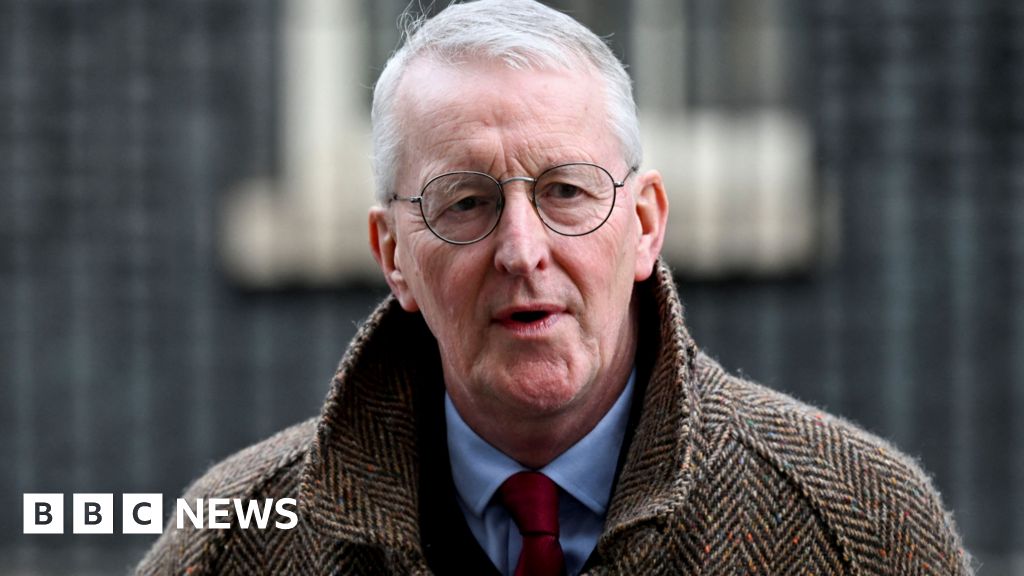ARTICLE AD BOX
 Image source, Getty Images
Image source, Getty Images
By Tom Symonds
Home Affairs correspondent
The prime minister says victims of grooming gangs have been ignored because of political correctness.
In plans announced on Monday, the government pledged more data on the make-up of grooming gangs, including ethnicity, to help ensure suspects "cannot hide behind cultural sensitivities as a way to evade justice".
It comes as Home Secretary Suella Braverman made several comments about the ethnicity of abusers in high-profile gangs.
In the Mail on Sunday she said "the perpetrators are groups of men, almost all British-Pakistani".
To the BBC she said the gangs were "overwhelmingly" made up of British-Pakistani males.
The remarks were described as a "dog whistle" by the Labour Mayor of West Yorkshire, Tracy Brabin, and Ms Braverman was separately accused of pushing "discredited stereotypes".
The Home Office clarified that she was talking about three of the most notorious grooming gang cases, from Rochdale, Rotherham, and Telford.
So what does the evidence say about the ethnicity of members of grooming gangs who sexually exploit children?
In her independent review of the Rotherham case, published in 2014, Prof Alexis Jay concluded that the majority of "known perpetrators were of Pakistani heritage" including five men convicted in 2010.
Greater Manchester Police identified the men convicted at the trial in the Rochdale abuse scandal in February 2012 as British Pakistani.
The Telford abusers were men of "southern Asian heritage", according to anindependent inquiry carried out into the case.
These reviews also mention concerns among police and social services teams that if they pursued groups of non-white offenders they might be accused of racism.
That string of cases, including the three quoted by Ms Braverman, involving non-white offenders has received widespread attention - especially from campaigners on social media.
The 2010 convictions of a group of white men, and a woman, for abusing 30 children in the Camborne area of Cornwall has received less attention.
What experts call the 'boyfriend' or 'lover-boy' model of child abuse is now well understood. Vulnerable children are befriended, groomed into believing a man loves and cares for them, then is slowly trapped in a cycle of abuse and threats.
But the suggestion that the ethnic background of the perpetrators plays an important part in abuse by gangs is hard to support, at least based on the current evidence.
The Home Office commissioned a study of the available data in 2020. It said:
- "The academic literature highlights significant limitations to what can be said about links between ethnicity and this form of offending."
- "Research has found that group-based child sexual exploitation offenders are most commonly white."
- "Some studies suggest an over-representation of Black and Asian offenders relative to the demographics of national populations."
It found there was limited research on offender identity and poor quality data, which made it difficult to draw conclusions, however "it is likely that no one community or culture is uniquely predisposed to offending".
A previous piece of research from 2015 found that of 1,231 perpetrators of "group and gang-based child sexual exploitation", 42% were white, 14% were defined as Asian or Asian British and 17% black.
The problem is that the data is from only 19 out of more than 40 police forces and nearly a decade old.
Another issue is that the ethnicity of the offender is recorded by police officers rather than self-assessed, and uses broad definitions, such as "Asian".
The 2020 Home Office report found this could result in offenders being classed as "Asian" while being from other backgrounds.
In 2022 the Independent Inquiry into Child Sexual Abuse investigated abuse in six cities which had not experienced a high profile grooming case.
It found evidence that gang-based abuse was happening, and of widespread failures by the police to record the ethnicity of perpetrators.
This "makes it impossible to know whether any particular ethnic group is over-represented as perpetrators of child sexual exploitation by networks," the report concluded.
The three reports into Rotherham, Rochdale and Telford concentrated on a range of issues.
One common thread was that the men involved were often running takeaways or driving taxis in the "night-time economy".
This gave them access to children who were out late, along with places to carry out the abuse, and vehicles to move their victims around.
One of the biggest issues in the response to grooming, identified in case after case, is the failure of police and social workers to focus on the victims.
Often teenagers, they were regarded as leading "risky lifestyles" involving drink and drugs.
The inquiry into the Telford abuse scandal, which published its report in 2022, found police dismissive of claims of abuse, with one saying "these girls had chosen to go with, I don't know, 'bad boys'".
Another reported "[Child] has no credibility - very often it is her word aginst [sic] the perpetrators and very often she does not co-operate."
"Believe she is making life choices. There are never any witnesses or 3rd parties."
Because children, often from deprived backgrounds, were dismissed as "lacking in credibility" their abusers were allowed to get away with subjecting them to horrific abuse, for too long.

 1 year ago
58
1 year ago
58








 English (US) ·
English (US) ·